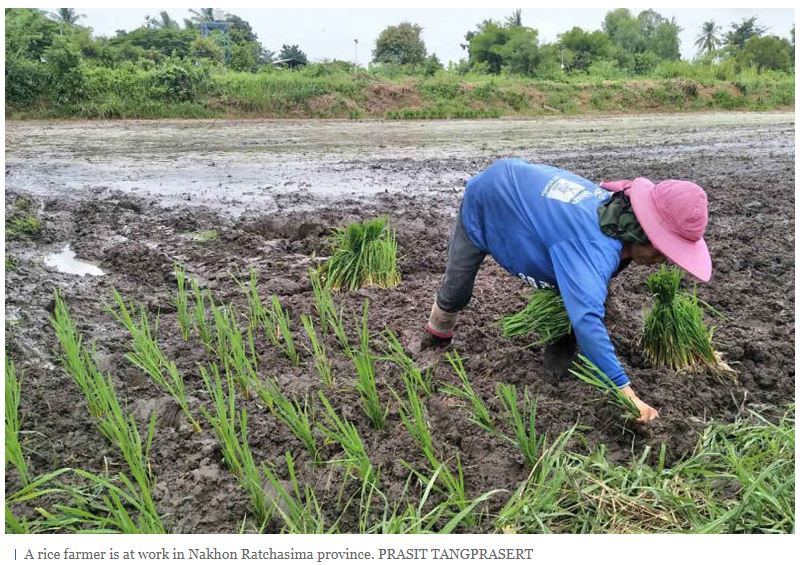Thailand: Rice strategy to focus on yield, variety
The government wants to raise the average yield of domestic paddy production to 600 kilogrammes per rai by 2024 and focus more on premium-grade grains.
Speaking on Thursday after a meeting of the working panel on rice strategy, Commerce Minister Jurin Laksanawisit said higher spending on R&D for rice seeds and variety are desperately needed to raise rice yields to 600kg per rai.
Thailand allocates only 200 million baht a year to R&D on rice seed development, considerably lower than Vietnam, which splurges up to US$100 million (3 billion baht) on its rice seed and variety development.
According to the Thai Rice Exporters Association, the world is estimated to produce a total of 500 million tonnes of milled rice in the 2020/21 season, up from 497 million tonnes in the 2018/19 season, with an average yield of 736kg per rai, a gain from 730kg the previous season.
Thailand is projected to produce 20 million tonnes of milled rice in the 2020/21 season with an average yield of only 450kg per rai.
Thailand’s productivity is much lower than other rice-producing countries such as Vietnam (934kg per rai), Indonesia (765kg per rai), India (643kg per rai), China (1,128kg per rai) and the US (1,363kg per rai). It is even lower than neighbouring countries: Myanmar (461kg per rai), Laos (518kg per rai), Cambodia (462kg per rai) and Malaysia (642kg per rai).
Mr Jurin said the country’s strategic rice plan between 2020 and 2024 should focus on seven rice types: Thai hom mali rice; Thai fragrant rice; soft-textured white rice; hard-textured white rice; parboiled rice; glutinous rice; and speciality rice.
The rice market should also be divided into three categories: Thai hom mali and fragrant rice for the premium market; soft-textured white rice, hard-textured white rice and parboiled rice for the mass market; and glutinous rice and speciality-quality rice for the speciality market.
He said the strategic plan should upgrade the country’s logistics efficiency to reduce export costs and competitiveness in the world market.
On the domestic front, the strategy needs to strike a balance between domestic consumption and production as well as water supply development.
The Commerce Ministry wants to team up with the Agriculture and Cooperatives Ministry to advise farmers how to grow rice in line with market demand and create a linkage with potential buyers to ensure price stability.
Charoen Laothammatas, president of the Thai Rice Exporters Association, said the government needs to invest more in irrigation system development and post-harvest improvements. Annual rice production and farming need to be prudently managed to prevent a glut, he said.
“Whether Thailand becomes the top global exporter doesn’t matter,” said Mr Charoen. “What matters is how to drive demand for Thai rice in the world market and maintain price stability in the country.”
Source: https://www.bangkokpost.com/business/1975863/rice-strategy-to-focus-on-yield-variety


 English
English




